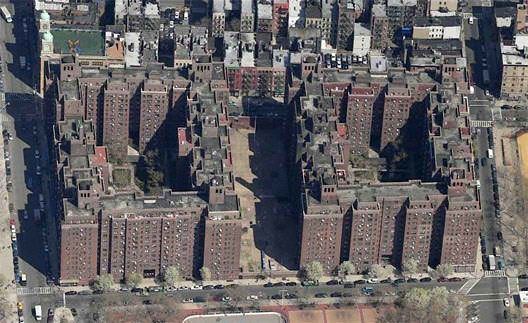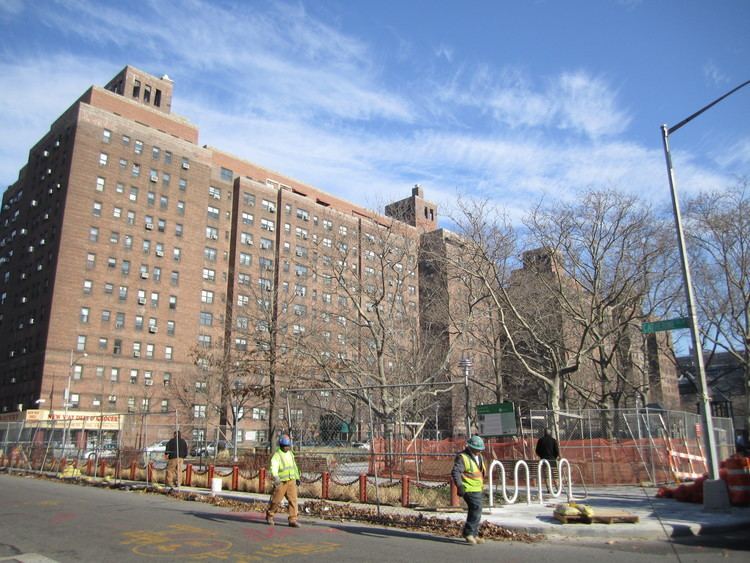 | ||
Knickerbocker village revisit
Knickerbocker Village Limited is a lower-middle class housing development situated between the Manhattan Bridge and Brooklyn Bridge, in what is generally considered to be the Two Bridges section of the Lower East Side of Manhattan, New York City. Although the location is generally considered to fall in the Lower East Side, it has come to be thought of as part of Chinatown in recent years. It is located a short distance from New York City Hall, Civic Center, and the South Street Seaport. The complex consists of 1,590 apartments in twelve 13-story brick buildings surrounding two courtyards at 10-12-14-16-18-20 Monroe Street and 30-32-34-36-38-40 Monroe Street on the Lower East Side, taking up two whole city blocks and bounded by Catherine Street, Monroe Street, Market Street, and Cherry Street.
Contents
- Knickerbocker village revisit
- New biometric security at knickerbocker village
- History
- Hurricane Sandy
- Notable residents
- References
New biometric security at knickerbocker village
History

The flamboyant real estate developer Frederick Fillmore French began construction of Knickerbocker Village in 1933 and completed it in 1934. As a project of the Reconstruction Finance Corporation (RFC), which Congress authorized to extend loans to private developers for the construction of low-income housing in slum areas, Knickerbocker Village was the first apartment development in the United States to receive federal funding, with 98% of the money from the project going to the Knickerbocker Village. It offered 1,590 small apartments primarily to small middle-income families.

The RFC was supposed to help revive the construction industry and increase the supply of low-income housing in New York. Eighty-two percent of the families who moved into the apartments were soon forced to move back to the slums they had left because of the escalating rents.

When the United States Congress authorized the RFC to make loans on slum clearance projects, French picked out the worst block in his holdings and presented it as a worthy subject for clearance. His choice was "Lung Block," so called because of its high tuberculosis mortality rate, where 650 families lived. French proposed to build a low-cost housing project. RFC lent 97% of the required $10,000,000. Average cost of "Lung Block" to Knickerbocker Village was high: $3,116,000, or $14 per square foot. The development's tax assessment was reduced by two-thirds to bring the monthly room rental down to the $12.50 stipulated by the RFC. Because the average rental before construction of the development had been about $5 a room, Knickerbocker Village no longer served the same low-income families that had lived in the "Lung Block" housing. It was filled with white collar workers.
There was a cooperatively run Nursery School started by young mothers and wives of returning World War II Veterans.
After fifty years, French sold the complex to a new ownership in the 1970s. Under that management, over a fifteen-year period, the complex underwent extensive renovation and rejuvenation. Almost fifteen million dollars were spent on new windows, new building entrance ways and foyers and waterproofing. The building also has a horticulturist who maintains the extensive gardens in the courtyard located in the center of the building and around the grounds. The complex includes the Hamilton Madison House Knickerbocker Village Senior Service Naturally Occurring Retirement Community (NORC) that offers services and activities for the building's increasing elderly population.
Hurricane Sandy
The property suffered severe damage from Hurricane Sandy in 2012 and is trying to recover. It is estimated that the full restoration of its infrastructure will take three years to accomplish. Protection from future flooding is in process as of September 2013.
Notable residents
Knickerbocker Village was home to a very diverse group of tenants that included civil servants, small business owners with stores on nearby Orchard or Hester Streets, and other notable residents including members of organized crime. Former residents include:
Other notable residents included:
